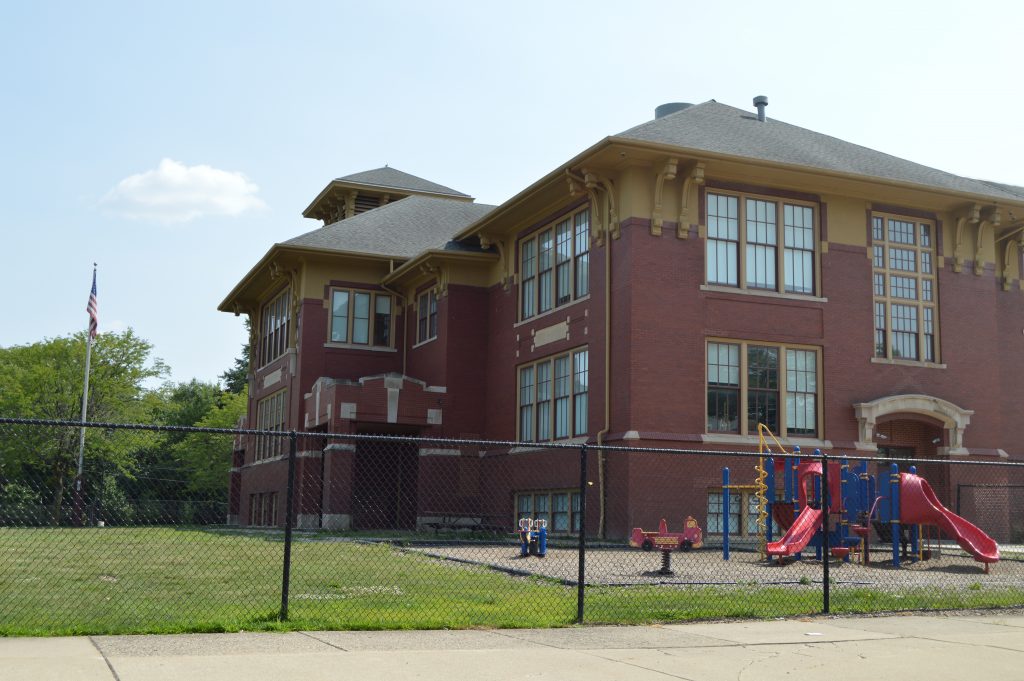Homeless Students Are Being Undercounted in Detroit, and That’s Denying Their Right to an Education, U-M Report Says
16% of Detroit families with children under 18 were homeless in the year before the coronavirus pandemic, but city schools identified only 2%.

There are far more homeless students in Detroit than are counted by city schools, according to data from a University of Michigan project.
Poverty Solutions is a university-wide initiative that takes a broad look at ways to prevent and alleviate poverty. Jennifer Erb-Downward, a senior researcher with Poverty Solutions who worked on its Detroit Homelessness and Education Databook, says 16% of Detroit families with children under 18 were homeless in the year before the coronavirus pandemic, but city schools identified only 2%.
“In every single classroom in Michigan there’s going to be a child who is experiencing homelessness and housing instability.” — Jennifer Erb-Downward, University of Michigan Poverty Solutions
“If you really wanted to see the face of kids who are experiencing homelessness, you just would look at your child’s classroom,” Erb-Downward says. “In every single classroom in Michigan there’s going to be a child who is experiencing homelessness and housing instability. And if you are not identifying children who are experiencing housing instability and homelessness, you’re fundamentally denying them their right to an education, because children who are experiencing homelessness have specific educational rights that go above and beyond what you would usually see.”
Students facing homelessness have educational rights under the federal McKinney-Vento Homeless Education Assistance Act, including the right to immediately enroll in school, even if they don’t have the required documentation; to remain in their original school, even as their housing situation changes; transportation to and from school; priority in early education; participation in extracurricular activities; and additional support and resources like tutoring or school supplies.
‘The Crux of the Issue’
The McKinney-Vento Act defines homeless children and youth as those who “lack a fixed, regular, and adequate nighttime residence,” Erb-Downward says. This includes students who are moving from place to place; couch surfing; staying in hotels, motels, trailer parks, campgrounds; or living in any place that is not fit for human habitation such as cars, public spaces or abandoned buildings.
“It also includes families who are living doubled up in another household temporarily as a result of loss of housing or economic hardship. And that is something that we don’t tend to think about as homeless,” Erb-Downward says.
Children who are homeless or lack adequate housing struggle more than their peers who are in stable housing, transfer schools more, have lower proficiency rates in English and math and are much more likely to be suspended or expelled.
“The crux of the issue of what’s really driving the educational outcomes … [is] the instability of the situation for that child — the fact that they don’t know where they’re going to live the next day, that they’re constantly having to move. That makes it challenging to stay in the same school,” Erb-Downward says.
“If you’ve experienced homelessness at any point in time, during your educational career, you are much, much more likely to be suspended or expelled from school.” — Jennifer Erb-Downward, University of Michigan Poverty Solutions
The Long-Lasting Impact on Kids
In Detroit, Erb-Downward says undercounting of homeless students is a big issue.
“Children aren’t identified. They’re not accessing their rights to their education. They’re not accessing those supports that exists for them. And that means that they’re going to be missing school. They’re going to be transferring schools more,” she says.
And the effects of homelessness last even after a child is in a more stable housing situation.
“Children who are currently housed but have been homeless in the past also are struggling more than their peers who have never experienced homelessness,” Erb-Downward says. “What we see for kids is that if you’ve experienced homelessness at any point in time, during your educational career, you are much much more likely to be suspended or expelled from school.”
It starts at a young age and worsens as they get older, she says, with 14% of students in early childhood through second grade being suspended or expelled from school; by third through fifth grade, it’s 25%, and by the time students get to middle school it’s roughly a third.
“What that really says is that we are not recognizing the issue of trauma that is really connected to the experience of housing instability and homelessness for kids,” she says, “and that when behaviors are manifesting in the classroom, rather than trying to connect those kids to the support services that they need, we’re pushing them out of school.”
Erb-Downward says this raises the question of how to work with schools to help children facing housing instability and homelessness.
“That is something that is really critical to be talking about: How do we shift that paradigm in terms of what we’re thinking about? In terms of our disciplinary policies in schools, how do we connect people to the supports that they need and work with schools and teachers to make that possible?” she says.
Trusted, accurate, up-to-date.
WDET strives to make our journalism accessible to everyone. As a public media institution, we maintain our journalistic integrity through independent support from readers like you. If you value WDET as your source of news, music and conversation, please make a gift today.
